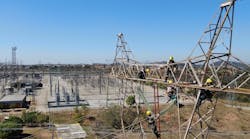The Rhode Island Department of Public Utilities (DPU) is in the midst of an important series of hearings regarding the future of the state’s electric grid. The goals are three-fold:
- Control the long-term costs of the electric system: The regulatory framework should promote a broad range of resources to increase the ratio of average to peak electric load, helping to right-size the electric system to Rhode Islanders’ needs.
- Give customers more energy choices: The regulatory framework should allow customers to use emerging technologies and commercial arrangements to manage their energy production and use.
- Build a flexible grid to integrate more clean energy generation: The regulatory framework should promote the flexibility needed to allow the electric grid to incorporate an increasing proportion of variable clean energy through use of demand response and energy storage, for example.
As stakeholders and advocates and utilities contribute to the process, it is clear that data analytics and related transparency issues are coming to the forefront.
Regarding the topic of “Data Connectivity,” the RI DPU stated that “the electric system of the 21st century will depend on operation of data networks to allow the utility to gain visibility and control of the electric system. Many of the functions associated with operation of a data network are outside of the electric utility’s traditional area of operations and include strategically important, but not capital intensive, software and service components. Taken together, these considerations may guide the inquiry into what the utility of the 21st century should do, how it should earn revenue, and what kind of metrics should shape its operation. “
Reviewing some responses after reading the RI DPU’s Notice of Inquiry into the Electric Utility Business Model and Request for Stakeholder Comment, I find myself wondering about what we call “transparency,” which is something that a lot of the interested non-utility parties commenting on these types of regulatory proceedings often demand of the utility participants, for example opening to public scrutiny utility calculations underlying T&D system planning.
Transparency sounds noble. The open sharing of cost structures involved in determining the ROI for utility initiatives may sound like a reasonable thing for third parties to demand, given the third parties’ interests in competing “fairly.”
While I agree with the seeming nobility of demands for transparency, I wonder what the growth path might have been for a lot of currently-successful companies in our capitalistic society, if all of their internal costs from their inception had, annually, been openly exposed in full detail to public scrutiny.
It may sound like a crazy question. But consider how our nation’s Gross Domestic Product (GDP) gets reported every year. Putting aside instances of illegal practices where companies hide their income, consider the fact that our government knows the actual revenue and employee levels and tax payments of all companies legally in business, making up our economy, but in the financial performance and productivity reporting that gets rolled up every year when our country’s GDP is determined, there is an intentional “non-transparency” introduced into the process.
Specifically, productivity and cost data gets bundled, by Standard Industrial Classification (SIC) codes and geographies, so as to preserve the confidentiality of individual companies’ data. In this way, non-publicly traded companies are able to grow and compete without fear that their competitors and prospective customers need to know their profit levels or cost structure or productivity.
If total transparency had been demanded by all companies, how well would they have survived? Wouldn’t some of the very same companies that often request transparency from utilities in these types of hearings have gone out of business before they could have grown to maturity, if the same type of transparency they are demanding of utilities had been demanded of them?
With these thoughts (or biases) of mine out in the open, I found it of interest to look at some excerpts, and responses related to the RI PUC’s May 1, 2017 Notice of Inquiry into the Electric Utility Business Model and Request for Stakeholder Comment. The full RI DPU Notice is at this link, and below are key questions RI PUC posed. (I won’t post any responses of stakeholders here, out of concerns one vs. another would be unfairly highlighted.)
We look forward to following these exciting developments and welcome reader comments.
Excerpt from Rhode Island Department of Public Utilities Notice of Inquiry into the Electric Utility Business Model and Request for Stakeholder Comment
What functions should the electric utility perform?
One important step to establish the utility business model is to define the functions that the utility should undertake.
The potential functions of a twenty-first century electric system may include:
- Reliability services, such as pole and line maintenance, circuit reconfiguration, supplemental power supply, undergrounding, power factor correction, distribution system engineering and voltage variation optimization.
- Connectivity services including operation of the communications backbone to support distribution line automation and to enable potential advanced metering functionality.
- Network integration services, such as scheduling, multi-directional power flow and management services, storage-based power “loan” services, electric vehicle charging services, and the necessary distribution system planning and data analysis for load, voltage and hosting capacity.
- Transaction management services, such as aggregation, clearing and settlement among parties, integration of distributed energy resources with ISO-NE markets, metering customers.
- Customer engagement services, such as home energy optimization, appliance automation, intelligent load management, backup energy services including energy storage, energy efficiency program delivery, customer support, low-income engagement and electric vehicle education. Many of these functions are so connected with one another that they are best undertaken by a single enterprise. However, there may be functions that could be undertaken separately or which the electric utility may not be optimally organized to perform.
Questions for stakeholders on utility functions
1) Which of the functions described here are integral to the future electric utility?
2) Are there additional functions not described here that should be included as a strategic focus of the electric utility?
3) Are there functions described here that should be provided by an unregulated third party, or through a market-based approach?
4) To the extent certain activities now being performed by the utility may be performed by other market actors, what type of oversight should be in place to protect customer interests?
5) Many of the functions described here require the utility to manage complex technology systems. What kind of regulatory approach could address the risk of technology obsolescence?
The full RI DPU Notice is at this link.


